Showing Spotlights 601 - 608 of 2790 in category All (newest first):
 Researchers report a simple, innovative and inexpensive design of a vitamin-based hybrid biocompatible nanogenerator with energy harvesting ability from various energy sources in a single device. This is the first time that inexpensive and biocompatible vitamin B2 has been used as a novel and effective beta-phase stabilizer to enhance the piezoelectric performance of PVDF. The attractiveness of using vitamin B2 is that it is biodegradable and biocompatible, thermodynamically stable, low-cost, has delocalized pi-electrons, contains multiple numbers of hydroxyl groups, carbonyl groups and amino groups in its backbone.
Researchers report a simple, innovative and inexpensive design of a vitamin-based hybrid biocompatible nanogenerator with energy harvesting ability from various energy sources in a single device. This is the first time that inexpensive and biocompatible vitamin B2 has been used as a novel and effective beta-phase stabilizer to enhance the piezoelectric performance of PVDF. The attractiveness of using vitamin B2 is that it is biodegradable and biocompatible, thermodynamically stable, low-cost, has delocalized pi-electrons, contains multiple numbers of hydroxyl groups, carbonyl groups and amino groups in its backbone.
Feb 28th, 2019
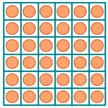 DNA nanotechnology employs DNA as a programmable building material for self-assembled, nanoscale structures with precisely controlled structures, that can lead to improved surface properties relevant to biosensing, materials science, and cell biology. Adding to the available tools for DNA nanopatterning, researchers have demonstrated a novel biotemplating strategy for ordering various nanoparticles into expected two-dimensional (2D) patterns via nanoparticle-surface or nanoparticle-DNA interaction.
DNA nanotechnology employs DNA as a programmable building material for self-assembled, nanoscale structures with precisely controlled structures, that can lead to improved surface properties relevant to biosensing, materials science, and cell biology. Adding to the available tools for DNA nanopatterning, researchers have demonstrated a novel biotemplating strategy for ordering various nanoparticles into expected two-dimensional (2D) patterns via nanoparticle-surface or nanoparticle-DNA interaction.
Feb 27th, 2019
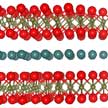 Potassium niobate (KNbO3) is a a perovskite ferroelectric crystal that, due to its optical properties, has been found useful in many different areas of materials science research, including electro-optics, piezoelectric, and electronic applications. Researchers have now, for the first time, succeeded in producing large KNbO3 crystals with uniform flat shape, and c-axis texture, which makes the crystals useful for practical electro-optic applications. By using MXenes as precursor materials to grow ferroelectric crystals, their 2D nature is inherited by the ferroelectric crystals.
Potassium niobate (KNbO3) is a a perovskite ferroelectric crystal that, due to its optical properties, has been found useful in many different areas of materials science research, including electro-optics, piezoelectric, and electronic applications. Researchers have now, for the first time, succeeded in producing large KNbO3 crystals with uniform flat shape, and c-axis texture, which makes the crystals useful for practical electro-optic applications. By using MXenes as precursor materials to grow ferroelectric crystals, their 2D nature is inherited by the ferroelectric crystals.
Feb 25th, 2019
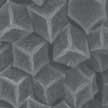 Directly carbonizing from organic precursors is the most frequently used method to prepare nanoporous carbons, widely used as electrode materials, due to its flexibility and simplicity. These materials present certain drawbacks, though, such as low surface areas, disordered structures, and non-uniform sizes, which will greatly limit their applications. However, researchers found that carbon materials derived from metal-organic frameworks (MOFs) could overcome these limitations. A review summarizes the applications of MOF-derived carbon materials.
Directly carbonizing from organic precursors is the most frequently used method to prepare nanoporous carbons, widely used as electrode materials, due to its flexibility and simplicity. These materials present certain drawbacks, though, such as low surface areas, disordered structures, and non-uniform sizes, which will greatly limit their applications. However, researchers found that carbon materials derived from metal-organic frameworks (MOFs) could overcome these limitations. A review summarizes the applications of MOF-derived carbon materials.
Feb 20th, 2019
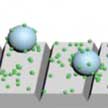 Researchers report a fluid-driven nanoparticle transportation clean-and-repair approach that reveals a novel self-healing system that conserves matter, behaves autonomously, and is implemented easily. Debris resting on a substrate is relocated, in one step, from undamaged to damaged regions of the substrate, using functional droplets that recognize and transport the nanoparticles. This simultaneous clean-and-repair approach reveals a novel self-healing system that conserves matter, behaves autonomously, and is implemented easily.
Researchers report a fluid-driven nanoparticle transportation clean-and-repair approach that reveals a novel self-healing system that conserves matter, behaves autonomously, and is implemented easily. Debris resting on a substrate is relocated, in one step, from undamaged to damaged regions of the substrate, using functional droplets that recognize and transport the nanoparticles. This simultaneous clean-and-repair approach reveals a novel self-healing system that conserves matter, behaves autonomously, and is implemented easily.
Feb 19th, 2019
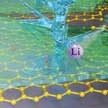 The formation of dendrites on the metal electrodes of lithium metal batteries causes safety and performance concerns. To avoid dendrites, researchers are experimenting with new battery electrolyte chemistries, new separator technologies, and new physical hosts for the lithium metal. Researchers now have discovered a key design rule for Li metal batteries: If you want to suppress dendrites, you have to use a defect-free host. More generally, carbon defects catalyze dendrite growth in metal anodes.
The formation of dendrites on the metal electrodes of lithium metal batteries causes safety and performance concerns. To avoid dendrites, researchers are experimenting with new battery electrolyte chemistries, new separator technologies, and new physical hosts for the lithium metal. Researchers now have discovered a key design rule for Li metal batteries: If you want to suppress dendrites, you have to use a defect-free host. More generally, carbon defects catalyze dendrite growth in metal anodes.
Feb 13th, 2019
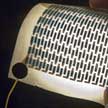 Over the past ten years, paper has emerged as a focus area for researchers developing innovative techniques for printed basic electronics components. The goal of this research is to replace plastic substrates with low-cost, versatile and sustainable materials. The main advantages of investing in paper for electronics and energy storage devices are the low cost of the technology; the potentiality to recover device components and recycle the substrate as well as the active materials; and the production of environmentally harmless and biocompatible devices.
Over the past ten years, paper has emerged as a focus area for researchers developing innovative techniques for printed basic electronics components. The goal of this research is to replace plastic substrates with low-cost, versatile and sustainable materials. The main advantages of investing in paper for electronics and energy storage devices are the low cost of the technology; the potentiality to recover device components and recycle the substrate as well as the active materials; and the production of environmentally harmless and biocompatible devices.
Feb 7th, 2019
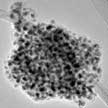 Researchers report significant advances in developing a high-temperature, fast nanomanufacturing technique for the large-scale production of ultra small metal nanoclusters decorated in a graphene host matrix. The size and morphology of the metal nanoclusters can be controlled by varying the reaction temperature and the mass loading of metal salt in the graphene aerosol nanoreactors. This one-step continuous aerosol-based thermal shock technique offers considerable potential for the manufacturing of well-dispersed and uniform nanoclusters stabilized within a host matrix.
Researchers report significant advances in developing a high-temperature, fast nanomanufacturing technique for the large-scale production of ultra small metal nanoclusters decorated in a graphene host matrix. The size and morphology of the metal nanoclusters can be controlled by varying the reaction temperature and the mass loading of metal salt in the graphene aerosol nanoreactors. This one-step continuous aerosol-based thermal shock technique offers considerable potential for the manufacturing of well-dispersed and uniform nanoclusters stabilized within a host matrix.
Feb 4th, 2019
 Researchers report a simple, innovative and inexpensive design of a vitamin-based hybrid biocompatible nanogenerator with energy harvesting ability from various energy sources in a single device. This is the first time that inexpensive and biocompatible vitamin B2 has been used as a novel and effective beta-phase stabilizer to enhance the piezoelectric performance of PVDF. The attractiveness of using vitamin B2 is that it is biodegradable and biocompatible, thermodynamically stable, low-cost, has delocalized pi-electrons, contains multiple numbers of hydroxyl groups, carbonyl groups and amino groups in its backbone.
Researchers report a simple, innovative and inexpensive design of a vitamin-based hybrid biocompatible nanogenerator with energy harvesting ability from various energy sources in a single device. This is the first time that inexpensive and biocompatible vitamin B2 has been used as a novel and effective beta-phase stabilizer to enhance the piezoelectric performance of PVDF. The attractiveness of using vitamin B2 is that it is biodegradable and biocompatible, thermodynamically stable, low-cost, has delocalized pi-electrons, contains multiple numbers of hydroxyl groups, carbonyl groups and amino groups in its backbone.
 Subscribe to our Nanotechnology Spotlight feed
Subscribe to our Nanotechnology Spotlight feed





